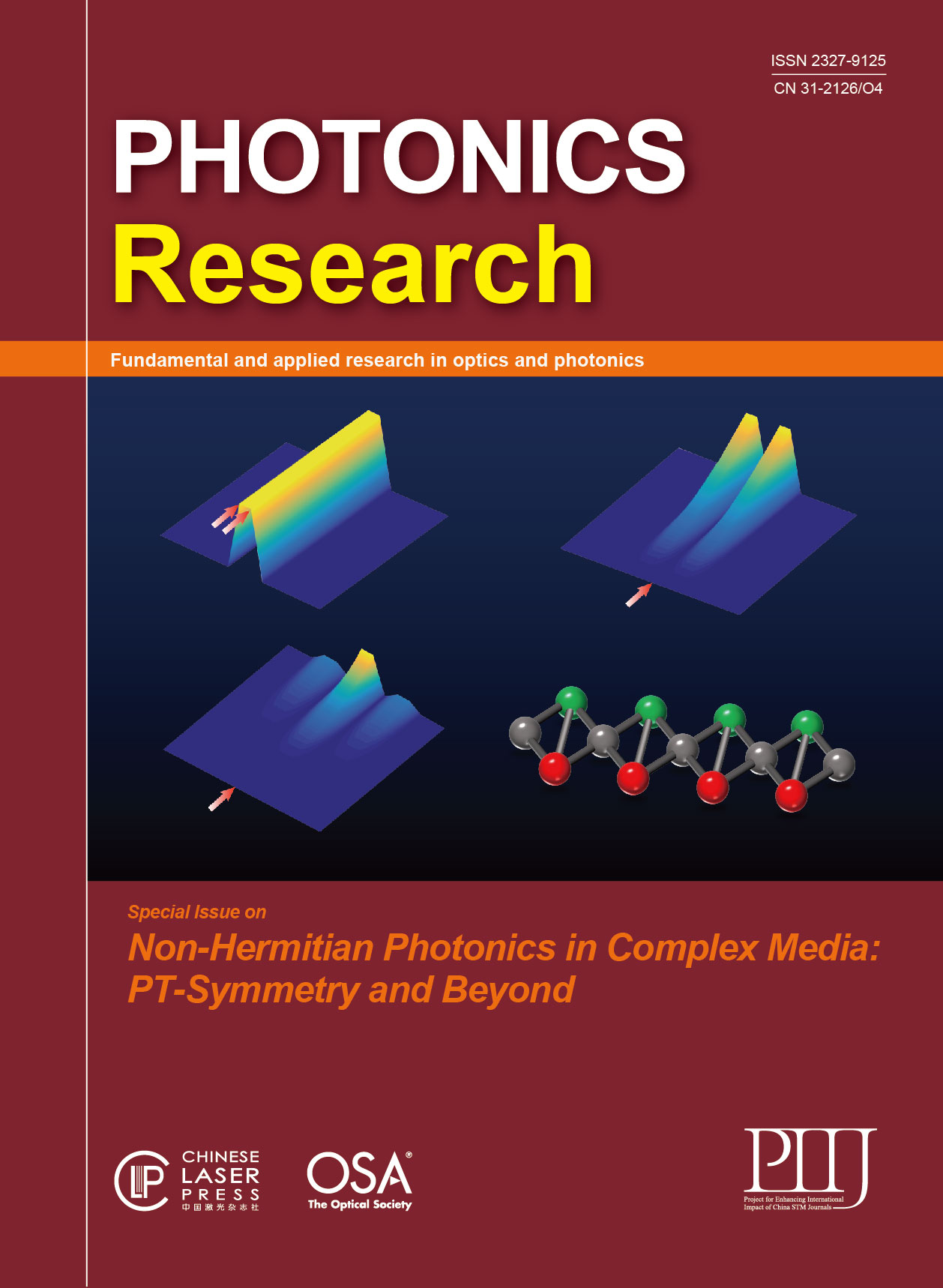- Special Issue
- Non-Hermitian Photonics in Complex Media: PT-symmetry and beyond
- 10 Article (s)
- Publication Date: May. 01, 2018
- Vol. 6, Issue 5, 0500PTS1 (2018)
- Publication Date: Jan. 30, 2018
- Vol. 6, Issue 4, 040000A1 (2018)
- Publication Date: Feb. 12, 2018
- Vol. 6, Issue 4, 040000A6 (2018)
- Publication Date: Mar. 05, 2018
- Vol. 6, Issue 4, 04000A10 (2018)
- Publication Date: Mar. 20, 2018
- Vol. 6, Issue 4, 04000A18 (2018)
- Publication Date: Apr. 04, 2018
- Vol. 6, Issue 5, 05000A23 (2018)
- Publication Date: Apr. 04, 2018
- Vol. 6, Issue 5, 05000A31 (2018)
- Publication Date: Apr. 11, 2018
- Vol. 6, Issue 5, 05000A38 (2018)
- Publication Date: Jul. 10, 2018
- Vol. 6, Issue 8, 08000A43 (2018)
- Publication Date: Jul. 24, 2018
- Vol. 6, Issue 8, 08000A51 (2018)
The idea of parity-time (PT) symmetry, first introduced in quantum mechanics, was recently realized in the context of photonics in the form of balanced gain-loss structures with special symmetries. In recent years, these systems have been shown to have many exotic features and behaviors with various potential applications, including unidirectional invisibility, coherent perfect absorption, negative refraction, novel laser designs, optical isolation, and unusual wave diffraction dynamics. One of the main characteristics of such non-Hermitian configurations is the existence of abrupt effective phase transitions that occur when the gain-loss amplitude exceeds a certain threshold value, providing even greater control over device design and functionality. More general gain-loss structures can exhibit an even richer variety of non-Hermitian optical properties, and the breadth of these properties has yet to be fully explored. This special issue is on a wide range of recent developments in the new area of parity-time (PT) symmetric and Non-Hermitian Optics, considering theoretical, experimental, and practical aspects of synthetic structures that contain gain and loss.










